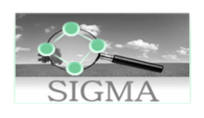
-
AOSE GROUP
About AOSe LAB
-
The ICAR Aose Group of Palermo was born in 2010 from the synergy of researchers sharing a common vision of Research objectives. In these few years, the AOSE group has been involved in several projects mainly in the ICT field. To date, the group collaborates with several universities and CNR institutes. The main research activities cover design methodologies and ICT innovation in several contexts such as smart environment, logistics and document management. The AOSE Lab works for FACILE (cognitive agents for intelligent management and fruition of information and advanced services) group research activity.
Recent Publications

Requirement Analysis Abstractions for AmI System Design
Abstract - Current trends in the AI’s evolution are going towards enriching environments with intelligence in order to support humans in their everyday life. AmI systems are plunged in the real world and humans expect to interact with them in a way that is similar to the one they have with other humans. In this kind of systems, where eliciting requirements involves several documents and stakeholders (mainly users that will be the first consumers of the system), the requirement analysis phase can be affected by incomplete, ambiguous and imprecise information. Hence, the need to find a fruitful way for knowledge management and its representation at design time. In this paper we propose a set of abstractions to be used during the early requirements analysis of AmI systems development. The result is a simple and at the same time powerful set of concepts and guidelines for providing environment knowledge representation for AmI systems.

Towards Self-Adaptation and Evolution in Business Process
Abstract - Business process run-time evolution and adaptivity are two urgent objectives in the research agenda of dynamic workflow execution. Traditional languages as BPMN or BPEL take an imperative style for defining the exact sequences of activities to execute. The imperative approach identifies a narrow space of solution that is generally optimized by the experience. However it does not provide enough freedom of action to bypass obstacles when something exceptional happens. In the wake of declarative specification languages we propose a framework, based on the standard BPMN, in which both business goals and the operative context are monitored for changes during the execution time. To enable a flexible adaptivity of the process to a changing environment we adopt the solution of relax some constraints of the rigid BPMN specification thus to give autonomous software agents the opportunity of exploring a wider space of solution, even when this space evolves unexpectedly or contains uncertainty. The result is a multi-agent system that exploits its features (mainly autonomy and proactivity) in order to monitor the execution state of the process and to discover a distributed solution to unpredictable situations or to specifications’ evolution.

Ontology and Goal Model in Designing BDI Multi-Agent Systems
Abstract - Nowadays several methodological approaches exist, each of them tightly tied up with the implementation platform supporting it. In this paper we propose an intermediate step toward the definition of a methodological approach for supporting the JACAMO framework. This paper resumes a previous work, focused on modeling BDI organizations, and we now address the requirements analysis phase. In particular, we propose the use of an ontological model and a goal model for representing requirements and the domain formalization respectively. The two portions of design process are connected by a heuristic process that allows to extract goals from the ontological model. The resulting models are also used for completing each other and for enhancing the problem description that is considered an input to our process. In the paper we use the well-known case study of the conference management system for illustrating the proposed portion of process.
Active Projects

SIGMA - Sistema Integrato di sensori in ambiente cloud per la Gestione Multirischio Avanzata
SIGMA, i.e Sensors Integrated System for Multilevel Risk Management, is a multilevel architecture implemented in cloud platform. It performs the acquisition, integration and processing of heterogeneous data coming out from several sensor network (Meteo, Seismic, Volcanic, Hydrological, Rainfall, Car & Naval Traffic, Environmental, Video ....). It aims to improve on the environmental and industrial monitoring and control systems in order to yeld useful information for the prevention and/or the management of risks. To this end, SIGMA provides a valuable service set not only for citizens but also for private and public enterprises.
The system has been designed for guaranteeing network access to its services even in location or critic situation when traditional communication networks are not available anymore for the accessing data gathered by sensor network.
OCCP - Open Cloud Computing Platform
The aim of the OCCP project is the study, design, construction and testing of a prototype of the "Open Cloud Computing Platform" for delivering Enterprise mashups services on cloud, both public and private. Funding Program PO FESR 2007-2013 Sicily.